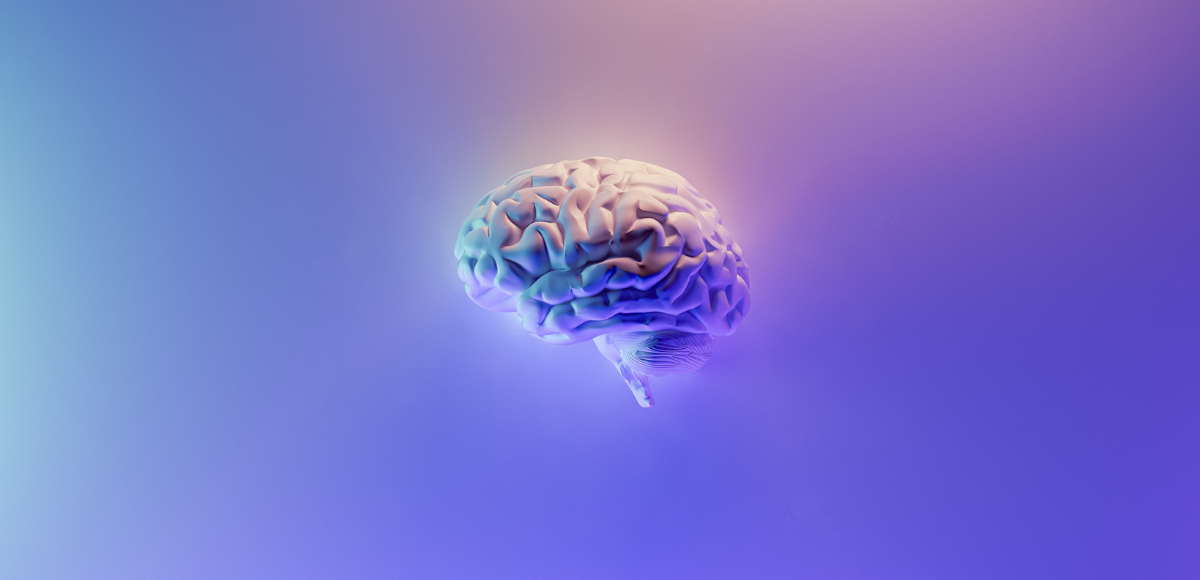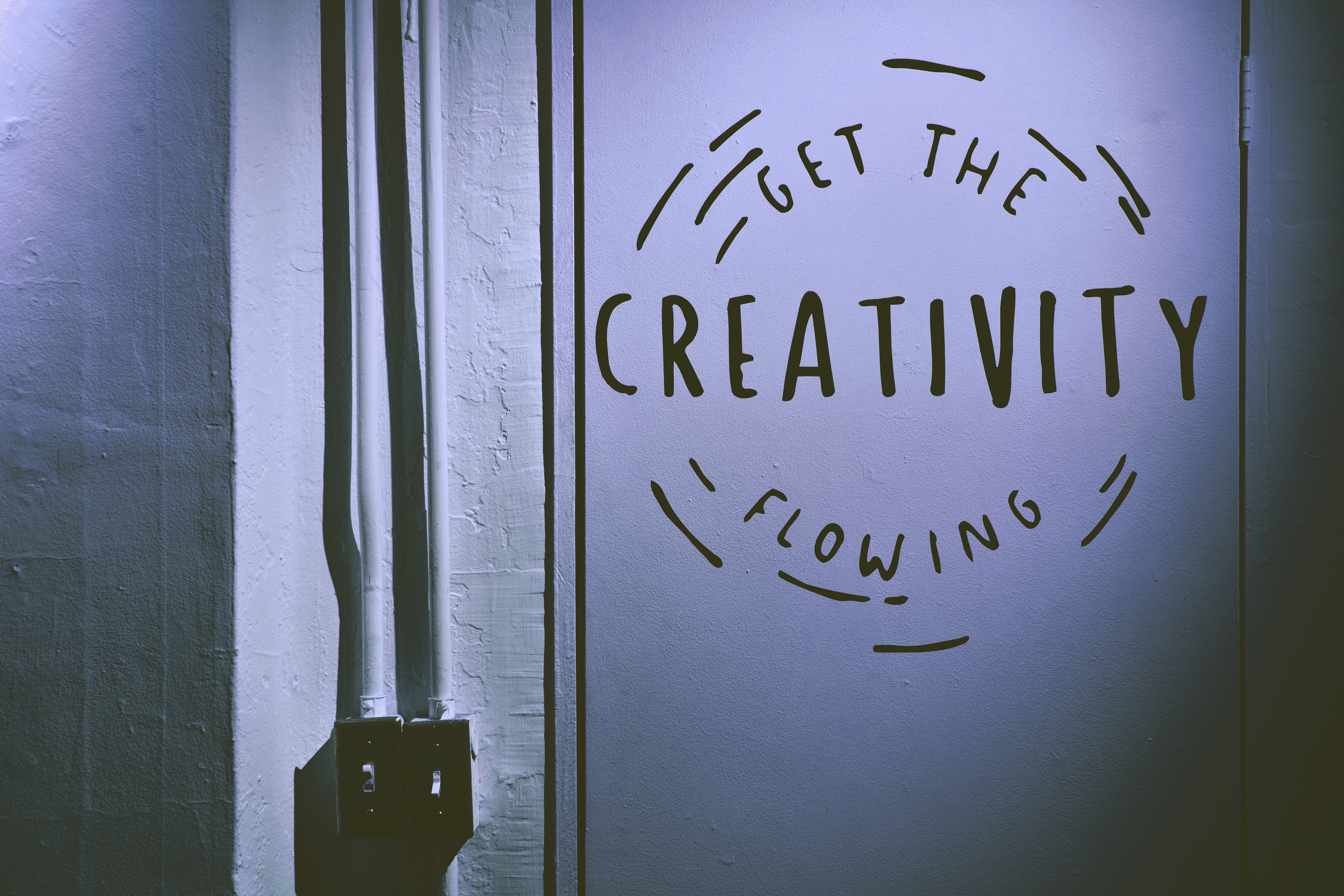
Art + the Brain: How Mental Health and Creativity are Connected

Written by Maggie Walker
For creatives, we may not be thinking about how the art we are creating or engaging with is having a direct impact on our life. And even for individuals who claim to be non-creative, art that you come in contact with is impacting you too. The connection between our brains and art leaves a more positive, powerful impact than we realize. Countless studies have been done regarding the link between mental health and creativity. Let’s dive in to understand the relationship between the two.
What Really is Creativity?
Creativity. In your head, you are probably thinking that you have an exact understanding of it, and words like painting, writing, and drawing are coming to mind. But, the definition and concept of creativity is a difficult thing to wrap your brain around. In sophisticated terms, creativity is the ability to transcend traditional ways of thinking or acting, and to develop new and original ideas, methods, or objects. Creativity is a skill that is specific and different for every individual. For some, this might come naturally, and for others it may not, but everyone has some sort of creative flair or edge. Second, creativity pushes the limits of the mainstream ways of thinking and acting. It breaks barriers and challenges those comfort zones. Lastly, it goes beyond these barriers and develops new ideas and things.
Saying that creativity may be one of the most important attributes to one’s life is not an overstatement. It might just be an understatement. Creativity has a huge physical impact on art, business, and innovation, but its impact on us as humans is much more profound. It can help us live longer, keeps us engaged, helps reduce stress, and improves necessary skills. Creativity is a vital component to our overall well-being and mental health.

The Link Between Mental Health and Creativity
The connection between mental health and creativity is a topic that is often speculated about. Is it positive or negative? Or is it both or neither? Research shows that many prominent creators, specifically in the arts field, had negative childhood experiences such as social rejection, parental loss, or physical disability. This led to mental and emotional distress. From Van Gogh to Hemingway to Plath, these artistic geniuses' connection to mental illness is inevitable. However, this does not necessarily mean that mental illness was a contributing factor in their creative success. In fact, creativity assists with self-affirmation, motivation, and adds meaning to our lives.
Engagement in everyday forms of creativity, such as collaging, taking photographs, or writing an article, has proven to allow individuals to be more open-minded, curious, persistent, positive, energetic, and motivated. When participating in everyday creativity, individuals are also bound to feel a greater sense of well-being and personal growth. And for those struggling with their mental health, expressing creativity can be therapeutic. Being creative can increase positive emotions, lessen depressive symptoms, reduce stress, decrease anxiety, and improve the function of immune systems.
Creating a Workplace that Enhances Well-Being and Creativity
Well-being and creativity have proven to drive innovation, increase the happiness of employees, and foster an effective work environment. People who are content at work are more productive, more engaged, more creative, and have better concentration. Creating a workplace where your employees have a way to voice their ideas, can collaborate with others, and can spread new, innovative thinking is vital to your business. This will make employees feel valued and heard which is extremely important to their overall well-being.
Creativity and well-being go hand in hand, so putting employees’ mental and physical health at the forefront is important. Encouraging creativity and innovation requires a strategy that focuses on employee well-being. This allows companies to gain an emotional, financial and competitive advantage. For creative work, a workplace environment matters more than ever. Many companies have started to take a more emotional approach to well-being by promoting their brands as fun, creative workplaces. These places have seen a huge jump in positive results, including a recruitment incentive. This is extremely attractive to potential candidates to add to your team. The key here is to create workplaces that are designed to be places where people want to be, because then they will feel as if they can do their best work in that space.
A study by Steelcase outlines six dimensions of well-being in the workplace. Let’s take a look at them below.
1. Optimism: Optimism is all about being eager to discover and try new things, despite the risk factor. This is critical to creativity and innovation. It affects things such as seeing the big picture, exploring different and new ideas, being open-minded, and not being afraid to take risks and challenge yourself. Optimistic employees tend to be more productive.
2. Mindfulness: Mindfulness is all about balancing the fast-paced workplace with being fully present. The physical space of a company for this one is important. People need a space where they can connect in person or online and a space where they can feel calm or stimulated.
3. Authenticity: Everyone wants to be a part of a company culture where they can fully be themselves and be encouraged to express their ideas and values. Creating an authentic workplace that has a home-like feel to it will allow employees to become more connected to the company and the people around them.
4. Belonging: Having a sense of belonging and connection to others will allow creativity to flourish in the workplace. By encouraging employees to socially connect with one another will generate positive emotions.
5. Meaning: Having a sense of purpose and passion behind the work is rewarding. People enjoy using their strengths, understanding their impact, and seeing how they contribute. Doing things in the right way can powerfully impact creativity and well-being.
6. Vitality: Engaging in movement is vital for promoting productivity at work. Sensory experiences are important as well. Creating spaces that boost employee’s performance will change their attitudes and behaviors.
Well-being is a competitive advantage in the business world today. And creativity is a business asset. The combination of positive physical and mental health, paired with a supportive workplace culture and environment, will lead these companies to productivity and creativity.
Brands Who Are Fostering Well-Being and Creativity

1. Patagonia: Odds are you’ve heard of “Let My People Go Surfing.” The founder of Patagonia, Yvon Chouinard, has been determined all of his life to never let business get in between him and his love for surfing. Patagonia has a policy for their employees that whenever the surf comes up, you drop the work and hit the waves. The success of the brand has come from always putting purpose before profit and remaining true to its values. Even though business methods are constantly changing, Patagonia’s values, culture, and philosophies have remained the same.
2. Online Optimism: Online Optimism, a marketing agency based mainly out of New Orleans, takes advantage of the great food around the city and plans an employee lunch each Friday at a new location. They believe that there is no better way to connect as a team than through delicious food in the city that they all love. This is a simple way that they boost creativity and morale within the agency.
3. REI: REI employees are avid lovers of the outdoors. They offer “Yay Days” that allow employees to get paid time to go outside and play. Each employee gets two “Yay Days” a year, where they are encouraged to try something new, challenge themselves in an old activity, or work on an outside stewardship project. This allows employees to reconnect with the outdoors and in turn, prepares them to deliver back great knowledge and service. REI believes that an outdoor life is a life well lived.
4. Airbnb: Airbnb gives employees an annual stipend of $2,000 to travel and stay in an Airbnb of their choice, anywhere in the world. This encourages employees to make the most of their paid time off and gives them a chance to use the service and engage with the host and community. With Airbnb listings in 191 countries, the options for traveling to a new place are endless.
5. North 6th Agency: North 6th Agency, a PR firm headquartered in NYC, offers an interesting perk where employees get to spin a “Wheel of Perks” and win something grand. In 2018, the agency went above and beyond, and one of their employees won a one-month sabbatical. They are built on the belief that as the company grows, it is important to develop perks that bring together the entire company.
6. Wheelhouse Digital Marketing Group: Wheelhouse, a fast-growing digital marketing agency, has been recognized as one of the best places to work in the US for a countless number of reasons. Joy is a core value of their company. Every employee has a monthly “Joy Fund” where they are given $50 that is to be spent on anything that brings joy to a Wheelhouse employee or client. The Joy Fund has been used for everything from concert tickets to noise-canceling headphones to weekly house cleaning. This is a prime example of how little things can make a big difference.
These six companies are just a handful of the many brands that are investing in and blazing the way for employee well-being programs. And creativity at work is directly linked to the positive well-being of employees. A key takeaway here is that a positive workplace and happy employees will generate more success over time, because that positive workplace will foster positive emotions and well-being. This improves people’s relationships with others and encourages creativity and innovation. So, focus first on your people, and the creativity and success will follow.
Topics: future of creativity
